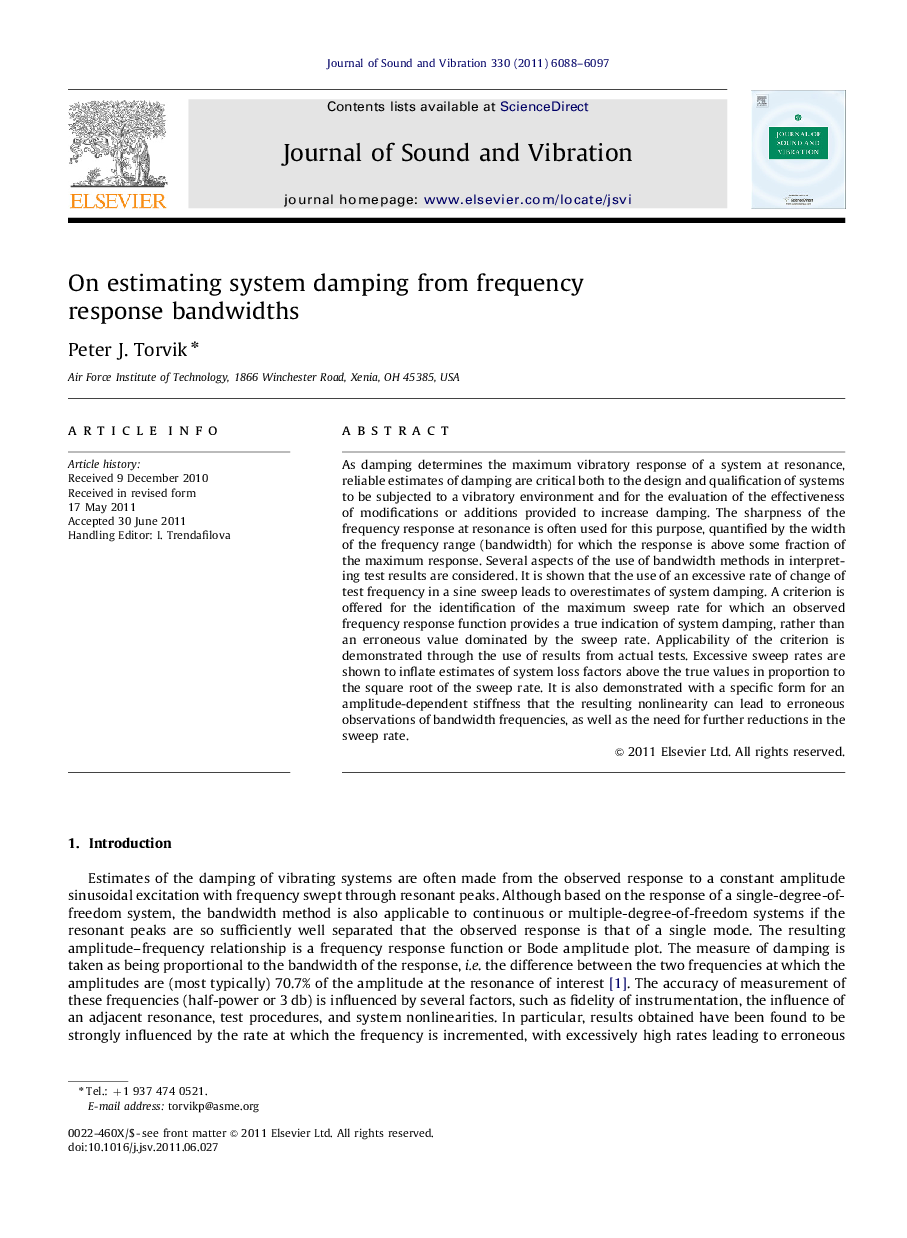| Article ID | Journal | Published Year | Pages | File Type |
|---|---|---|---|---|
| 289277 | Journal of Sound and Vibration | 2011 | 10 Pages |
As damping determines the maximum vibratory response of a system at resonance, reliable estimates of damping are critical both to the design and qualification of systems to be subjected to a vibratory environment and for the evaluation of the effectiveness of modifications or additions provided to increase damping. The sharpness of the frequency response at resonance is often used for this purpose, quantified by the width of the frequency range (bandwidth) for which the response is above some fraction of the maximum response. Several aspects of the use of bandwidth methods in interpreting test results are considered. It is shown that the use of an excessive rate of change of test frequency in a sine sweep leads to overestimates of system damping. A criterion is offered for the identification of the maximum sweep rate for which an observed frequency response function provides a true indication of system damping, rather than an erroneous value dominated by the sweep rate. Applicability of the criterion is demonstrated through the use of results from actual tests. Excessive sweep rates are shown to inflate estimates of system loss factors above the true values in proportion to the square root of the sweep rate. It is also demonstrated with a specific form for an amplitude-dependent stiffness that the resulting nonlinearity can lead to erroneous observations of bandwidth frequencies, as well as the need for further reductions in the sweep rate.
► The sweep rate is critical when damping is determined by the bandwidth method. ► With an excessive rate of change of excitation frequency, the system Q is reduced. ► This reduction is proportional to the square root of sweep rate. ► A criterion for sweep rate adequacy is proposed and validated with data from tests. ► Further reductions in sweep rate are necessary for systems with nonlinear stiffness.
